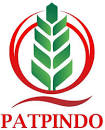PENGARUH SUBSTITUSI TEPUNG BEKATUL TERHADAP SIFAT FISIK DAN KIMIA DARI MIE BASAH
DOI:
https://doi.org/10.36526/jipang.v2i1.1210Keywords:
bran flour, wheat flour, wet noodle, fiber, vitamin E, organolepticAbstract
Noodles is one of the Indonesian favorite foods. The number of noodle consumption is increasing to make Indonesia on a second rank highest in the world after China with the rate of consumption of noodles as much as 38,970 billion servings. Wheat flour is a staple ingredient used to make wet noodles, which is obtained by means of import. An alternative that can be taken to decrease the import of wheat flour is by way of utilizing the raw materials of local food non wheat flour as an ingredient for making wet noodles. Bran flour (rice bran) is one of the results of the agricultural products obtained from rice milling process. This study is to determine the formulation of wet noodles and effect of bran flour substitution on physical, chemical and organoleptic properties of wet noodles. The design
used in this research is complete random design (RAL) with 2 factors, namely the flour mixture with the formulation of wheat flour (250 g, 225 g, 212,5 g, 200 g and 175 g) and bran flour formulations (0 g, 25 g, 37,5 g, 50 g and 75 g). The Data obtained were analyzed with ANOVA and followed by a test DMRT. The results of the analysis showed that the treatment of wet noodles obtained on the best wet noodles with the formulation (wheat flour 175 g : bran flour 75 g). The addition of bran flour produced a wet noodle with higher fiber and vitamin E content and also more preferred by consumers.
References
Astawan, M. dan A. Leomitro. 2009. Khasiat Whole Grain: Makanan Kaya Serat untuk Hidup Sehat. Jakarta: Gramedia Pustaka Utama.
Basset, j., R. C. Denny, G.H. Jeffey, J. Medhom. 1994. KIMIA ANALISIS ANALIS.
Damayanthi, E. 2006. Rice Bran. Jakarta:Penebar Swadaya.
Daulay, A. S. 2011. Karakteristik Mie Instan dengan Substitusi Tepung Jagung dari Berbagai Varietas. Skripsi. Sumatera Utara: Universitas Sumatera Utara.
Diniyah, Nurud. Puspitasari, Amelia. Nafi, Ahmad. Subagio, Achmad. 2016. Karakteristik Beras Analog Menggunakan Hot Extruder Twin Screw. Jurnal Penelitian Pasca Panen Pertanian. 13(1): 36-42.
Fassano, A., dan Carlo, C. 2012. Celiac Disease. New England Journal of Medicine. 367(25): 2419- 2426.
Hodgson. E dan P. E. Levi. 2000. Kemampuan Vitamin E Sebagai Antioksidan Terhadap Radikal Bebas Pada Lanjut Usia. Jurnal MIPA. 14(1). Surakarta: UMS.
Koswara, Sutrisno. 2009. Teknologi Pengolahan Mie. Ebook pangan.com.
Liandi, Weni. dan Zubaidah, Elok. 2015. Formulasi Pembuatan Mie Instan Bekatul (Kajian Penambahan Tepung Bekatul Terhadap Karakteristik Mie Instan). Jurnal
Pangan dan Agroindustri. 3(1): 174-185
Mardhatillah. 2008. Karakteristik dan Nilai Gizi Biskuit Bayi Yang Dibuat Dari Tepung Terigu Yang Disubstitusikan dengan Tepung Labu Kuning (Cucurbita maxima
duch) dan Isolat Protein Kacang Hijau. Skripsi. Padang: Universitas Andalas.
Nur Fadilah, Putri Syifa. 2018. Mie Instan Jadi Candu Dunia Indonesia Nomor 2 Pengonsumsi Tertinggi. Kompas.com. [diakses 13 Juli 2019].
Nursalim, Y. dan Razali, Z. Y. 2007. Bekatul Makanan yang Menyehatkan. Jakarta: PT Agro Media Pustaka.
Soewarno, T.S. 1990. Dasar-dasar Pengawasan dan Standarisasi Mutu Pangan. Pusat antar Universitas Pangan dan Gizi. Bogor: Intitut Pertanian Bogor
Winarno, F.G. 2004. Kimia Pangan dan Gizi. Jakarta: PT. Gramedia Pustaka Utama











